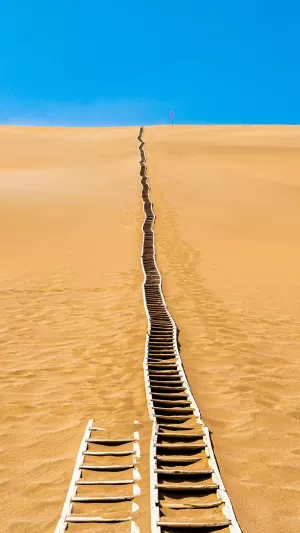As we all know, the world is composed of land and sea, of which the sea area accounts for about 70%, the land area accounts for about 30%, and one-third of the land is desert. Crossing the river is the jungle, crossing the jungle is the desert, the desert is inlaid with lakes, and the end of the desert is the ocean. If there is such a national park in the world that interweaves various natural landscapes, would you like to go? This article will introduce the most fascinating deserts in the world.
1. Atacama Desert - South America
The Atacama Desert is located in the western part of the Andes Mountains, mainly in Chile, but also in Peru, Bolivia and Argentina. It is known as the "dry pole" of the world. Why? Some areas never rain. But despite this, the desert is still inhabited. In fact, over a million people live there because the Atacama is actually relatively cool because of its location on the Pacific coast of the desert.
2. Tabernas Desert - Spain
If you want to visit the desert in continental Europe, Tabernas Desert is your only option. But this is a very good one. Located in southeastern Spain, it has been a great place to shoot spaghetti westerns for years because of its terrain similar to the American Southwest. You may even come across western-style towns as you travel. If you're a fan of Algerian hedgehogs, you might find one here.
3. Chihuahuan Desert - New Mexico
Covering 175,000 square miles (282,000 square kilometers) in the largest desert in North America, it's home to many amazing plants and animals, including Arizona rainbow cacti, gray foxes, and more. But the most popular attraction is New Mexico's White Sands National Monument, with its incredible landscape of white gypsum sand dunes.
4. Sahara Desert - Africa
Spread over much of northern Africa, it is the largest hot desert in the world (3.6 million square miles or 9.3 million square kilometers) and the third largest overall. When most people think of the Sahara Desert, they imagine it to be nothing more than amazing sand dunes. But these are really only a small part of the desert. Most deserts consist of rocky hamadas or barren lands and rocky plateaus. The Sahara also has mountains, occasional grasslands, and salt flats.
5. Gobi Desert - China/Mongolia
The Gobi Desert is located in northwestern China and southern Mongolia. It is worth noting that it was both part of the Silk Road and one of the important roles of the Mongol Empire. It is also known for its capricious climate. For example, summer temperatures are typically around 115°F (45°C), while in winter, unforgiving winds drop temperatures to -40°F (-40°C). And there are many dinosaur fossils, you will also encounter Bactrian camels, Siberian bison and Gobi brown bears, etc.
6. Thar Desert - India/Pakistan
The Thar Desert is the most populous desert in the world with over 16,000,000 inhabitants. Most of the desert consists of sand dunes, alluvial plains and salt lakes that form during the monsoon season. It is also a place of great biodiversity, with more than 140 different species of birds, 25 species of snakes and 23 species of lizards.
7. Salar de Uyuni - Bolivia
The Salar de Uyuni, in the western plateau of the Potosi province of Bolivia, was once a prehistoric lake called Lago Minchín, the largest salt-covered wasteland in the world. Yet it dried up, leaving us with the largest salt flat in the world, covering more than 4,000 square miles (10,500 square kilometers). It also contains 50 to 70 percent of the world's lithium reserves. The best way to experience the beauty of the Salar de Uyuni is to take an off-road vehicle.
8. White Desert - Egypt
The White Desert is a natural wonder located in the Farafala oasis in western Egypt. It consists of sand in various shades of white and pink rock, many of which resemble giant mushroom clouds, sculpted by the wind. You'll also find over 100 wells - many of which are natural and date back to Roman times.





